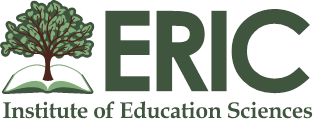Gifted Students' Perceptions of Artificial Intelligence through Drawings: A Perspective from Science and Art Centers
DOI:
https://doi.org/10.55549/jeseh.785Abstract
Artificial Intelligence (AI) emerges as the development of computer systems and software that imitate human abilities and perform human-like tasks. Understanding what gifted students think about this system that includes deep cognitive abilities is considered important. Based on this premise, this study examines the perceptions of gifted students towards the concept of AI. The research was conducted using phenomenological design, a qualitative research method. The data of the research were collected from 50 gifted students enrolled at a Science and Art Center and selected through a convenience sampling method. The “Draw-Write” form was used as the data collection tool. The data obtained were analyzed using content analysis, consistent with the nature of qualitative research methods. The study shows that participants may have three types of positive, neutral and negative roles related to AI. The research findings suggest that gifted students perceive AI as both a supportive tool and a potential competitor to human capabilities. The research showed the need for ethical considerations and awareness of the societal impacts of AI. Their futuristic vision shows that they are ready to explore the potential applications of AI in various fields. By recognising and addressing these perspectives, educators and policy makers can foster an environment that balances innovation with ethical responsibility and enables AI to serve as a tool for collective progress.
References
Bedir, G., Benek, I., Yuca, E., & Donmez, I. (2025). Gifted students' perceptions of artificial intelligence through drawings: A perspective from science and art centers. Journal of Education in Science, Environment and Health (JESEH), 11(2), 126-139. https://doi.org/ 10.55549/jeseh.785
Downloads
Published
Issue
Section
License
Copyright (c) 2025 Journal of Education in Science, Environment and Health

This work is licensed under a Creative Commons Attribution 4.0 International License.
The articles may be used for research, teaching, and private study purposes. Any substantial or systematic reproduction, redistribution, reselling, loan, sub-licensing, systematic supply, or distribution in any form to anyone is expressly forbidden. Authors alone are responsible for the contents of their articles. The journal owns the copyright of the articles. The publisher shall not be liable for any loss, actions, claims, proceedings, demand, or costs or damages whatsoever or howsoever caused arising directly or indirectly in connection with or arising out of the use of the research material. All authors are requested to disclose any actual or potential conflict of interest including any financial, personal or other relationships with other people or organizations regarding the submitted work.






